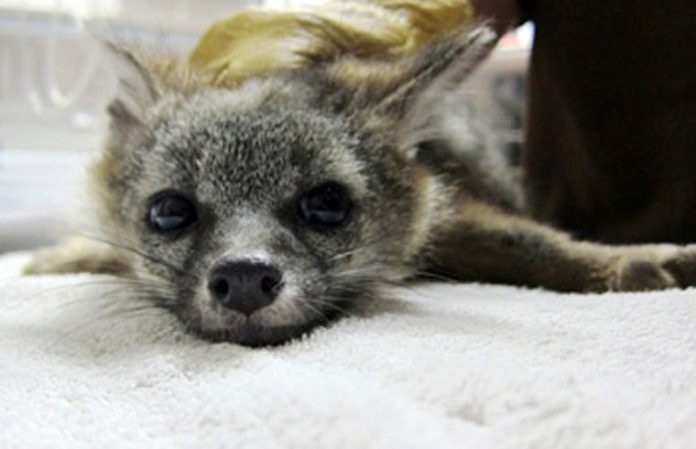Last week the California Council for Wildlife Rehabilitators reported a major positive step, albeit on a small scale, toward protecting wildlife from rodenticides.
The City of Malibu voted to “urge all property owners to no longer use or sell anticoagulant rodenticides … to cease purchasing or using anticoagulant rodenticides on their properties in Malibu” and to “commit the City of Malibu to not use anticoagulant rodenticides as part of its maintenance program for City-owned parks and facilities.”
A rodenticide, such as the commonly used d-Con, is essentially a blood thinner. An animal who ingests it bleeds to death internally. While intended for pest animals, the problem is that any animal, wild or domestic, who eats a dying or dead mouse or rat is also affected. Children have also been affected, as the poison is often sold in the form of colorful little pellets.
Since 2006, Wildcare, a wildlife rehabilitation center in Marin County, has been sending carcasses and tissue samples from carnivores they have treated, who have either died or been euthanized, to the California Animal Health and Food Safety Laboratory at UC Davis for testing to determine the cause of death. So far in 2013, a whopping 78.6 percent have been found to be victims of rat poisoning. Species affected include hawks, owls, turkey vultures, raccoons and foxes.
The California Animal Health and Food Safety Laboratory also reports that “anticoagulant rodenticide (AR) exposure is one of the leading causes of toxicant-induced morbidity and mortality in pet dogs.”
Rat poisons used today will kill the animal after a single feeding, but it may take up to a week for the animal to die. Not only does that allow plenty of time for the mouse or rat to be eaten by a predator, during that time the mouse or rat may eat more rat poison, thus strengthening the dose received by any predator who eats it.
Other cities in California have previously passed legislation encouraging consumers to not use rat poisons, but none have been able to pass outright bans because only state and federal authorities have the authority to do so. But perhaps help is on the way. In February 2013, the Environmental Protection Agency announced that it intended to cancel the registration of second generation rodenticides. All products affected carry the d-Con label, because the manufacturer of d-Con is the only company that has not complied with previous EPA attempts to limit the sale of its rat poisons. The EPA stated: “The purpose of this action is to protect children, pets and non-target wildlife from unnecessary, unreasonable exposures to certain consumer-use rodenticides.”
Many people rely on d-Con to take care of the problem of unwanted mice and rats, but there are safer, equally effective measures that can be taken. Here’s what you can do to help. First, try to limit places for rodents to hide and eat: cut back plants that afford them cover, such as heavy growths of ivy or other vines. Block access to areas under porches or decks, and make sure basement and crawl space openings are completely screened. Do not store food in basements. Remove all outdoor pet food and water bowls at night. Be sure your garbage can lids are secure.
Another step to take is to encourage wild predators such as barn owls to make their homes near your property. One barn owl family can eat thousands of mice and other small rodents each year. Many farmers in the South County have benefited from installing barn owl boxes on their property. At their request, many of the barn owls WERC rehabilitates each spring are released at local farms and fields.
If these measures do not work and you must resort to killing the rodents, use old-fashioned snap traps, which are inexpensive, quick, effective and cause no collateral damage.
Amy Randall Yee has lived in Santa Clara County for 35 years, and has volunteered at WERC for six years. She is also the President of the Board of Directors of WERC.










